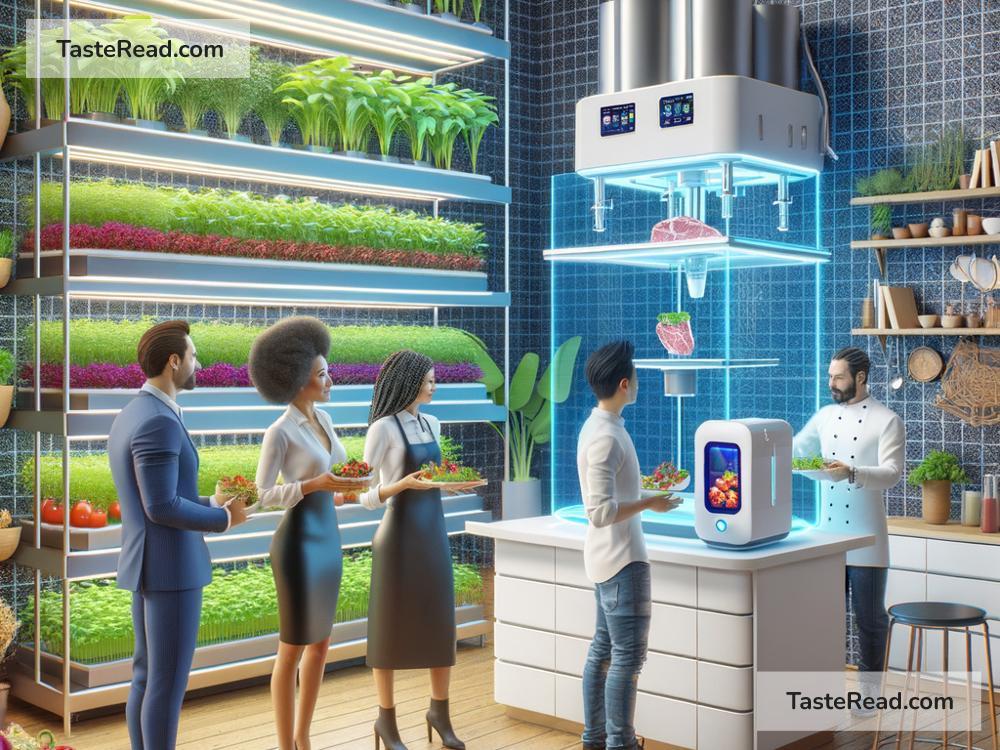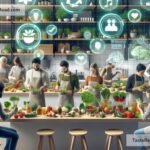The Future of Food: Building a Healthy, Sustainable System Together
Food is one of the most important parts of our lives—it nourishes us, connects us, and shapes our world. But the way food is grown, distributed, and consumed today is facing big challenges. Climate change, growing populations, environmental damage, and unequal access to healthy food are putting pressure on the global food system. So, what does the future of food look like? And how can we work together to create solutions that benefit everyone? The answer lies in participatory systemic solutions.
What Is the Food System?
The food system includes everything involved in feeding people—farming, production, transportation, packaging, selling, and eating. A good food system should provide safe, nutritious food for everyone without harming the planet. Unfortunately, the current food system has weaknesses. For example:
- Environmental Damage: Large-scale farming often harms the environment by polluting water, using too much land, and causing deforestation.
- Climate Change: Rising temperatures and unpredictable weather make it harder to grow crops.
- Food Waste: A shocking amount of food—about one-third of what’s produced—is wasted globally every year.
- Inequality: Millions of people don’t have access to enough food, while others can afford to waste it.
- Health Problems: Highly processed, unhealthy food is contributing to rising rates of obesity, diabetes, and heart disease.
It’s clear that the food system needs to change, but these are complicated problems that can’t be solved by individuals alone. That’s where participatory systemic solutions come in.
What Are Participatory Systemic Solutions?
To break it down:
- Participatory means everyone gets involved—farmers, companies, scientists, governments, and communities.
- Systemic means addressing the entire system instead of fixing problems in isolation.
Participatory systemic solutions are about working together to rethink how food is grown, distributed, and consumed in a way that benefits people and the planet. It’s not just one person or one company making changes—it’s a collective effort.
What Could the Future of Food Look Like?
Here are some exciting ideas about how food might evolve and how we can create a better system:
1. Sustainable Farming
Future farming will focus on practices that protect the environment while producing enough food for everyone. For example:
– Regenerative Agriculture: This type of farming rebuilds soil health, reduces carbon emissions, and conserves water.
– Urban Farming: Growing food in cities using rooftop spaces or vertical gardens could make fresh produce more accessible.
– Technology in Agriculture: Drones, artificial intelligence (AI), and data tracking tools can help farmers grow crops more efficiently with fewer resources.
2. Fair Food Distribution
The future food system must ensure that everyone, no matter where they live, has access to affordable and nutritious food. Solutions include:
– Reducing food waste by improving storage and transportation systems.
– Creating local food hubs so farmers can sell directly to communities, cutting out middlemen.
– Strengthening food networks where surplus food is shared with people in need.
3. Alternative Food Sources
New food innovations are coming to life, offering creative ways to meet global demands:
– Plant-Based Meat: Products that mimic the taste and texture of meat are becoming more popular, reducing the need for livestock farming.
– Lab-Grown Foods: Scientists can now grow meat and dairy products in labs, which uses fewer resources and reduces environmental harm.
– Edible Insects: Insects like crickets are nutritious and require much less land and water to farm than traditional livestock.
4. Empowering Communities
A fair food system means involving people in decisions about what they eat and how food is produced. Communities can take steps to:
– Start local community gardens to grow their own food.
– Organize farmers’ markets to support local growers.
– Advocate for policies that make healthy, sustainable food available to everyone.
5. Smarter Food Choices
In the future, people will likely have more knowledge and tools to make decisions about what they eat. Apps, labels, and educational programs can inform consumers about the environmental and health impacts of their food. Changing tastes and habits—like eating more seasonal and local foods—can make a big difference.
How Can We All Work Together?
Participatory systemic solutions require partnerships between governments, businesses, and everyday people. Here’s how each group can help:
- Governments: Leaders can create policies that encourage sustainable farming, invest in food research, and make nutritious food affordable.
- Businesses: Companies can use environmentally friendly practices and reduce waste while making their products healthier.
- Scientists: Researchers can develop new food technologies like lab-grown meat or drought-resistant crops.
- Everyone Else: You can make smarter choices every day—eat less meat, shop locally, reduce food waste, and support sustainable brands.
A Shared Vision for the Future of Food
The future of food is something we can shape together. By rethinking how food is grown, shared, and eaten, we can create a system that is fair, sustainable, and healthy for everyone. Participatory systemic solutions remind us that no single person or organization can solve these problems alone. It takes teamwork, creativity, and commitment to build the kind of food system the world deserves.
Let’s imagine a future where every child has enough to eat, the planet flourishes, and communities thrive because of strong food networks. That future is possible when we all do our part. Together, we can transform the food system into one that serves both people and the planet—one meal, one choice at a time.


